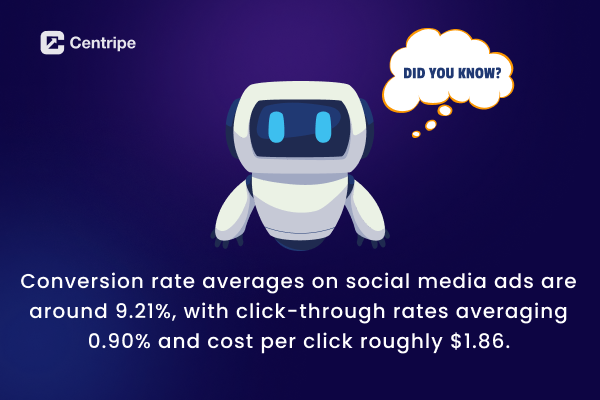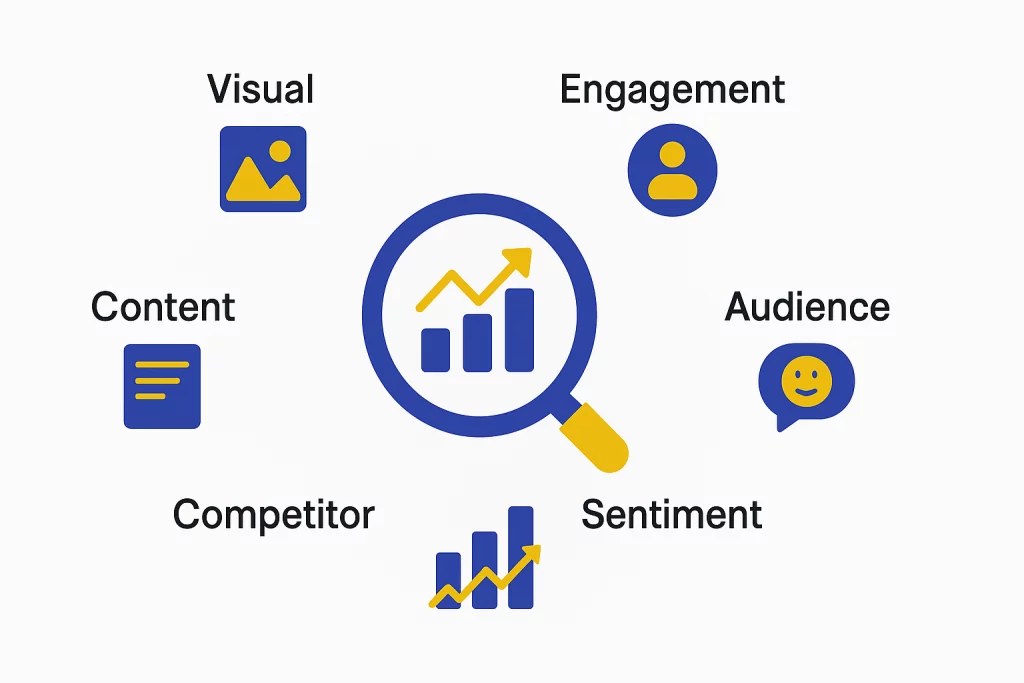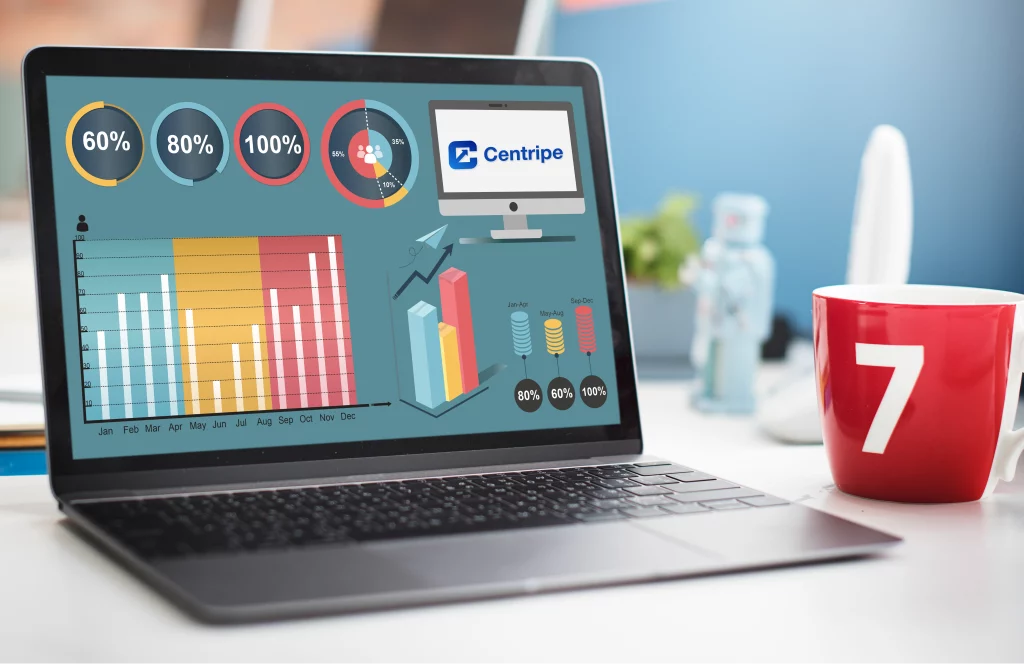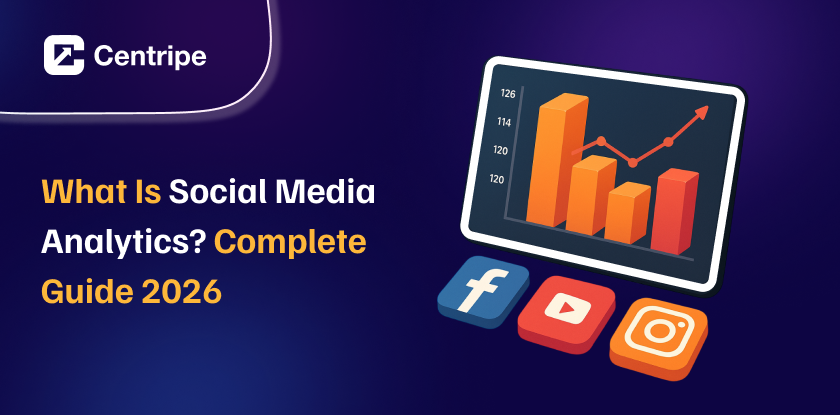‘Our team did this, did that, we did everything right.’
‘So, why didn’t we get the desired results?’
It’s crucial to analyze your posts on social media. Every interaction should be studied, and every engagement should be considered.
Social media analytics help you monitor every movement on all the accounts. Your team set the goals high, but how will you know if they’re achieved or not?
To keep up with the pace of competitors, you have to be aware of the ifs and buts inside your own brand. Knowing which ways are working and which are not can be done only with a thorough analysis.
What is Social Media Analytics?
Social media analytics is practical. It gives you the data to measure the effectiveness of your social media campaigns.
Even to understand how the content is performing and how much the audience is engaging with your brand’s digital presence. You get useful insights that are drawn from raw numbers like shares, likes, comments, and follower counts.
It keeps you ahead by focusing on the relevancy of trends with your brand’s name. You can predict which post will resonate more with the audience, where the sales will be more, what kind of ads your need to run, etc.

Types of social media analytics

1. Visual Content Analytics
This analyzes the performance of images and videos that are shared on social media, including which visual types get the most views and likes. Visual content has now become one of the pillars in social media management.
It also studies trends in visuals like colors or styles that resonate with audiences. This is important because strong visuals drive higher engagement.
2. Engagement Analytics
With Centripe’s amazing User interface, you can get reporting in the most understandable way.
Their feature lets you know how people interact with your social media posts through likes, comments, and clicks.
You get to know which content gets the most attention, and so you can prepare strategies accordingly.
Let’s say a post got many likes but fewer comments. Then, maybe the caption or call to action needs a bit of work.
3. Audience Analytics
“Marketing is not about the product; it’s about the customer.” — Philip Kotler.
Even if your ads are amazing, it doesn’t mean that they will surely drive results. Because maybe you are showing it to the wrong audience. WASTE OF TIME AND MONEY!
Hence, this social media analytics becomes prominent. It lets you know who the followers are. Their age, gender, location, and behavior.
You can then customize the post based on their interest and habits.
4. Content Analytics
This analytics helps you measure how well specific posts or campaigns perform by looking at reach, impressions, and clicks.
It even lets your team identify what kind of content works best.
For example, if a Facebook post gets low clicks, changing the headline or image might improve results.
5. Competitor Analytics
This involves analyzing what other brands in your space are doing on social media. It helps you spot what works well for others and find gaps your brand could fill.
If a competitor’s videos are popular, you could create your own version for your followers.
6. Sentiment Analysis
Sentiment analysis looks at how people feel about your brand on social media. This can be positive, negative, or neutral. It helps catch problems early or know what to promote more.
If many comments mention slow delivery, it’s a clear sign to enhance customer service.
6 Reasons Why Social Media Analytics Matter?

1. Predicting Future Trends and Behaviors
It’s obvious that a brand should always think of the future. Get strategies right, set the goals, and work hard to achieve them.
Social media analytics gives you an early warning to identify emerging patterns before they become obvious.
Your team can analyze subtle shifts in engagement, content preferences, and conversation themes. Now this leads you to the next step of reacting proactive.
2. Optimizing Content Lifecycle and Longevity
Analytics shows not only which content does well at first, but also how it keeps adding value over time.
Knowing which posts last and which don’t can guide you in creating strong content strategies.
It also shows you when to revive or repurpose successful material. This insight helps you get the most value from each piece of content. Don’t view all posts as just temporary moments.
3. Identifying Hidden Audience Segments and Untapped Micro-Communities
There are prospects beyond demographics. Social media analytics gives data of micro-communities and niche segments that typical targeting might miss.
There are customers who want to buy the kind of product you are offering, but they are not aware of your brand. Even though they are not in your system, that is a missed opportunity.
You get two benefits with this. Increase in Revenue and addition of data for future selling.
It calls for hyper-targeted campaigns that speak directly to groups you didn’t know were actively interested in your brand.
4. Crisis Prevention and Proactive Reputation Management
‘Prevention is better than Cure.’ We all follow this for health, but the same principle should be followed in business, too.
Using Centripe’s AI, you can detect the issues early, rising negative feelings or false information before they are turned into big problems.
You can act fast by watching conversation speed, shifts in sentiment, and unusual engagement patterns. This helps you address concerns, clear up misunderstandings, or handle new issues.
This protective layer helps keep brand reputation strong by raising awareness fast, rather than fixing issues later.
5. Cross-Platform Synergy Discovery
Sometimes, the audiences act differently on various platforms.
It also highlights how content success on one channel affects activity on others. Seeing these connections helps you run campaigns that work together.
Each platform can boost the others instead of working alone. This overall view reveals the best ways to share content.
It uses the strengths of each platform and keeps the messaging consistent.
6. Validating Creative Intuition with Evidence
Taking shows how artistic creativity connects with strategy. It tests which bold ideas resonate and which ones don’t.
It provides clear feedback on experiments, new formats, or unique methods. So, it encourages innovation rather than stifling it.
This validation framework encourages smart risk-taking. It quickly reveals what ideas should grow and what should be dropped. This turns creative experimentation into a clear process instead of relying on luck.
7 Simple Social Media Analytics Strategies
1. Set Clear Goals and Know What to Measure
First, decide what you want your social media to do for your business. Do you want more people to know about your brand, get new customers, or sell more products? Each goal needs different ways to measure success.
Important Things to Track:
- Count how many people see your posts and how quickly you gain followers.
- Keep track of the likes, comments, shares, and clicks on your posts.
- Measure how many visit your website or make a purchase after seeing your posts.
- Check how fast you respond to questions and resolve customer issues.
2. Watch How People Use Your Social Media
Social media changes very fast, so you need to pay attention all the time. Keep track of when people like your posts, who these people are, and what they do when they see your content.
What You Should Watch:
- Alerts when people mention your business online
- When your followers are most active
- Which posts receive the most likes and comments
- How quickly you respond to customer messages
3. Find Out What People Think About Your Business
To make smart choices use the data. Learn what people are saying, whether it is good or bad about your business.
Chatbots can tell whether the customers are happy or not.This helps you catch problems early before they get bigger.
You can also see if your posts make people feel good and find out what customers really want from your business.
4. Check How Well Your Posts Work on Different Apps
For each app, the strategy is different. Check how well the posts are performing on different social media platforms. Some post might be more engaging on one platform and not on others.
Look at which types of posts (videos, pictures, stories) get the most attention. Post at various times and use different hashtags. This helps you find what your followers enjoy most.
5. Compare Yourself to Other Businesses
Other businesses are also trying to get attention on social media. Look at what they’re doing to see how you compare and find ways to be better.
Check if more people talk about your business than theirs online. See how many likes and followers they get compared to you, and learn from their best ideas.
6. Figure Out If Social Media Helps Your Business Make Money
The key thing is to find out if social media helps your business thrive. Track if people buy things or visit your website after seeing your social media posts.
Look at how much money you spend on social media ads and how much you make back. Use special tracking codes to find out which social media posts drive traffic to your website and boost sales.
7. Make Reports and Keep Getting Better
Every information is useful if you know how to use it to make decisions. Reports should be simpler to let you know about what is beneficial and what is not. So you can make changes in the campaigns.
Make reports that are easy to understand for different people on your team. Try different types of posts and times. Note what works best, then share your findings with everyone to keep improving.
Why Agencies and Marketers Need Social Media Analytics Tools
The modern marketer’s challenge begins when clients ask: “What return are we getting on our social media investment?”
Without analytics tools, this becomes a nightmare of spreadsheets and guesswork. Professional analytics change this conversation.
They track conversions. They calculate ROI. They show the whole customer journey, from engagement to purchase. This turns social media into a clear revenue driver.
Monitoring helps spot brand reputation problems early. This helps prevent them from getting worse. Continuous A/B testing boosts campaign performance step by step.
For agencies managing multiple clients, analytics tools become the operational backbone. They combine all accounts in one dashboard.
They automate tedious reports and save hours weekly. This efficiency keeps teams consistent. Historical data helps with proactive forecasting and strategic planning.
Conclusion
Social media analytics platforms like Centripe are best to get detailed reports of your posts and reels are doing.
Keeping track is the best way to focus on things that matter. Once you maintain the balance of what’s working and what’s not, you save a lot of resources for business.
Teams are aligned, and they know which strategies would be more impactful. They get an idea of the path ahead.
